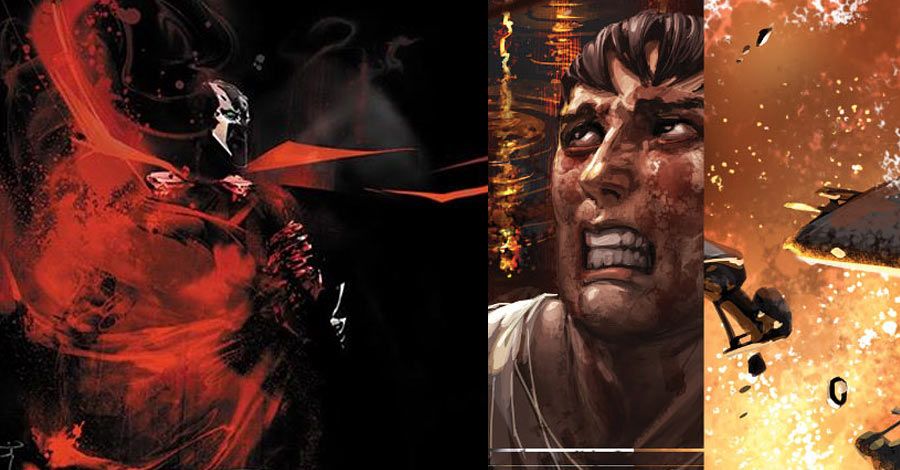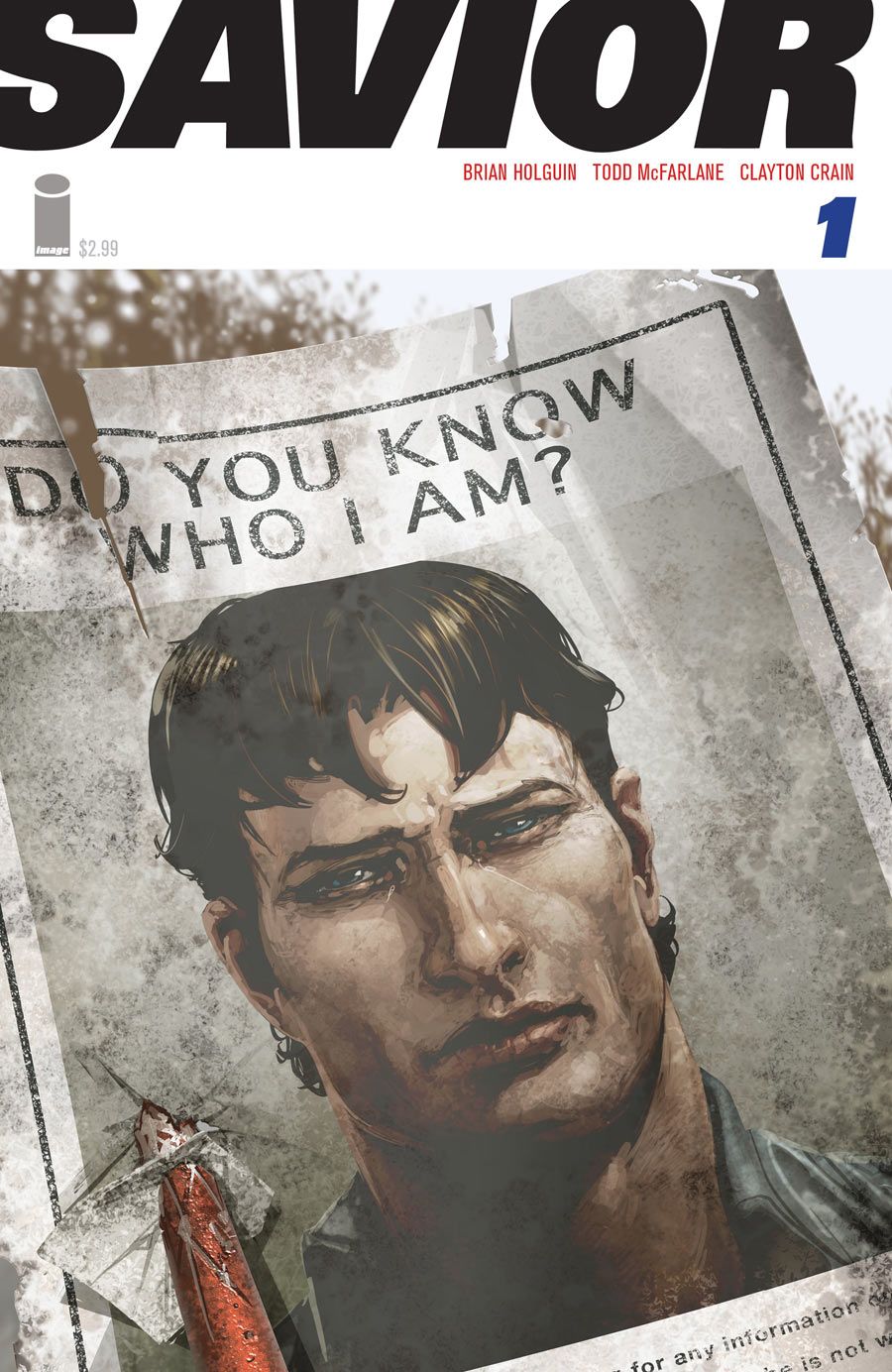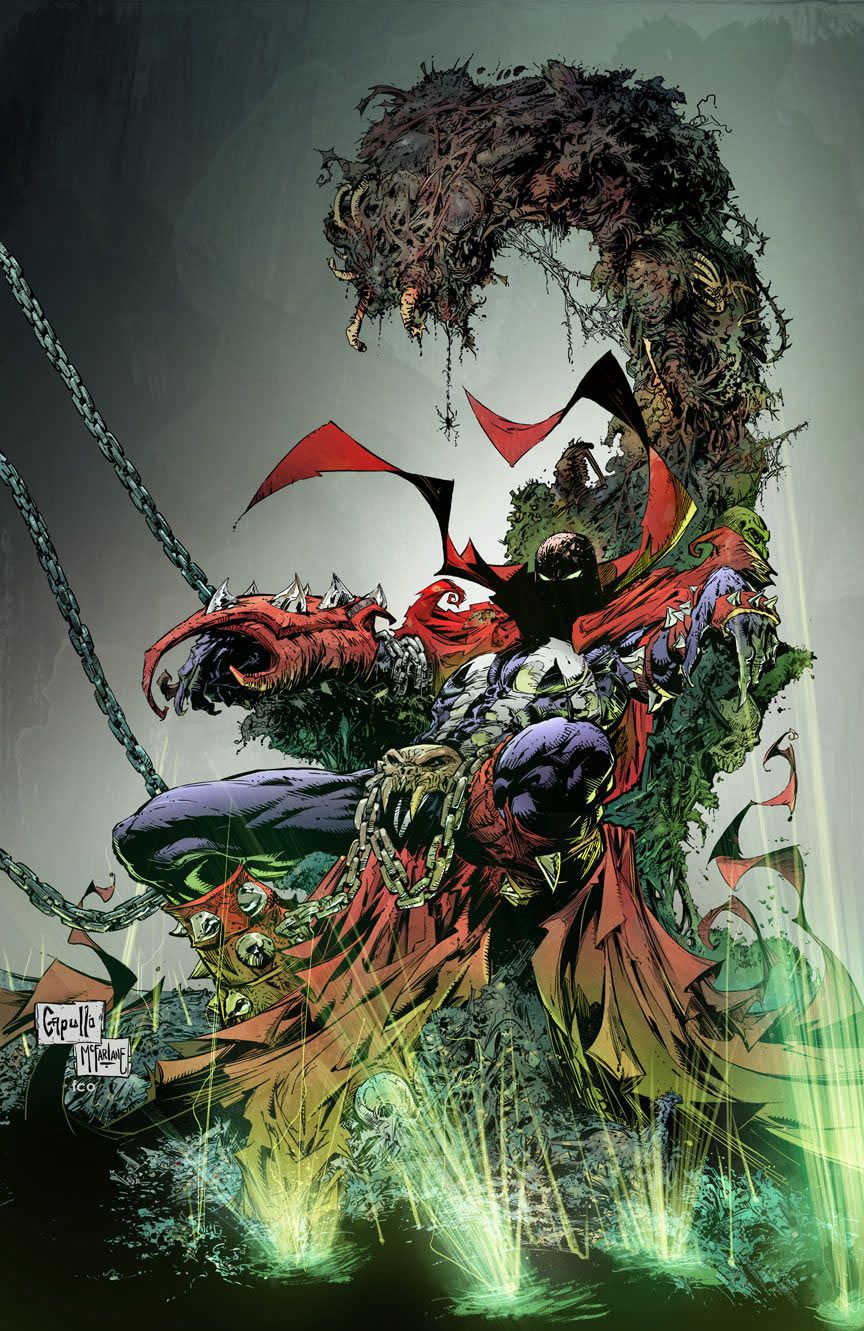The 2015 Image Expo continued on Thursday at the Yerba Buena Center for the Arts in San Francisco with "A Conversation with Todd McFarlane," featuring a spirited conversation with the Image Comics co-founder and "Spawn" creator.
Image Expo was already a newsworthy show for McFarlane by the Thursday afternoon panel. Earlier that day, during Image Comics Publisher Eric Stephenson's keynote address, McFarlane announced that Paul Jenkins was taking over writing "Spawn," along with news of an already completed eight-issue miniseries titled "Savior," co-written by Brian Holguin with fully painted art by Clayton Crain.
Image Comics' David Brothers moderated the panel, and told the crowd the first comic he ever read was the McFarlane-illustrated "Amazing Spider-Man" #316. Brothers asked McFarlane why he chose comics. "I was the proverbial best artist in the class," McFarlane said. "I was a cut above all the other kids." McFarlane told a story of drawing a picture in kindergarten, and his teacher was surprised he didn't draw the same as the other kids -- he was doing a "down shot" of a cow, though he wasn't really aware of it then. It was at that point, McFarlane said, that he realized he saw the world differently than others.
"I had a buddy that collected comic books," McFarlane said, saying he was "smitten" when he encountered them as a teenager, then committing himself to learning how to draw American superhero comics. "From 16 to 22, I honed that skill," McFarlane said.
Addressing his many rejections while he was an aspiring creator, McFarlane said they weren't demoralizing. "You have to get used to being told no," McFarlane said, pointing out that he received constructive criticism along the way. "I took it as, 'Oh, there's a tip.' I tried to apply those tips, I'd send another batch. I was a thousand tips away from being a pro. I think by the time I got to 200 steps away from being a pro, I wore them out. They said, 'This kid, who used to be really bad, is now OK. We'll see if he gets better, and he'll stop sending us samples every month.'"
McFarlane said he sent samples every month to every editor at every comic company -- naming Marvel, DC Comics, Pacific Comics and First Comics as examples. "Once you're in, now the pressure is on you individually, and prove you actually belong."
"I believe there's no one in this room I can't turn into a functional artist, if you give me 8 to 10 hours of your life, six days a week, for five years," McFarlane said. "Not a great artist maybe, but a functional artist. I think the only reason I draw better than some of you out there is because I've drawn thousands of faces. Repetition, repetition, repetition."
McFarlane stressed the importance of deadlines, and advised aspiring artists in the crowd to aim to draw one page a day. "When I became a pro, I started doing it 9 to 5," McFarlane said, adding that he treated his comics art as a job with regular business hours.
Brothers asked McFarlane what prompted his diversification into toys and more. "I did comic books for a lot of years, and I know that my last 10, 20 years on the planet, I'm going to be doing comic books full-time," McFarlane said. "I'll just say, to hell with everything else. But for me, it's all art. Someone who makes music is an artist. Someone who writes novels is an artist."
"Are you comfortable honing your craft in public?" Brothers asked McFarlane. "If there's one industry where you bare everything you do, warts and all, it's comic books," McFarlane answered, contrasting it to industries like film where concept art is used but often unseen. "Whatever you draw, it gets printed for public consumption."
Turning back to his early days, McFarlane said, "The guys and gals who inspire me the most weren't the best artists in the business. I was looking at all the guys on books who, for me personally, were terrible. 'If that guy can get a job, I can get a job.' That's what inspired me."
Moving to fan questions, the first came from an audience member named Dave, who McFarlane said he sees at shows frequently and "might be his personal comic book stalker." Before Dave asked his question, McFarlane told a story about how he received an honorary doctorate from his alma mater, Eastern Washington University -- and how he was sure it would drive his wife crazy, as she had just received her master's degree from Arizona State University. This was on top, he explained, of him winning a Grammy (for directing Korn's "Freak on a Leash" music video) despite knowing nothing about music, while his wife is an accomplished pianist. McFarlane summed it up: "There's always a backdoor."
"A few years back, we did our first Image convention," McFarlane said. "I was standing there going, 'All of this is because of what we started in 1992, and if you took us out of the equation, it would still work.'"
McFarlane talked the importance of creating ideas that outlast your lifetime. "If you can do that, that's pretty cool," he said. "If I die, and there's still a Spawn, that's cool. In this case, Image may be there even the day after I die. That's awesome. Hopefully it goes a hundred years."
"We started what we did for personal, selfish reasons," McFarlane continued. "We knew that if we set the example, others would take advantage of it."
McFarlane said he's the only one of the seven original Image Comics partners to not have drawn a page for Marvel or DC Comics since the inception of the company. "To me, it was a clear reason. I am the president of Image Comics. Image Comics is in direct competition with Marvel and DC. To me, it's a conflict of interest, and in some states, it's illegal. To me, if I can do two pages, it'll be for Image, not Marvel or DC."
The next fan up -- the audience members are joining McFarlane and Brothers on stage to ask their questions -- spoke of McFarlane's diversification of his business, and asked him what current creator reminds him of himself. Addressing the first part, McFarlane said his mother taught him not to put his eggs in one basket.
"I saw a consolidation at the two big companies, Marvel and DC, and I didn't know how long the comic industry was going to thrive," McFarlane said. "Even more importantly than that, when I was trying to break into comic books, I read about the history of comic books. And here's what I knew: They eventually got rid of all of us. Even Jack Kirby got the short end of the stick. If they can do it to the king, they can do it to anybody." McFarlane said from his earliest days in the industry, he knew he had to diversify. "I had dear friends who drew comic books for 20, 30 years, and one day the phone just stopped ringing. And it was the only thing they knew."
McFarlane said there were four pillars he wanted to expand to: movies, TV, toys and video games. "If I can get those four with my characters, I can lay all the other stuff on top of it," McFarlane said. Next month at Toy Fair, McFarlane said McFarlane Toys will announce they're working with a major new brand.
The last fan question asked why McFarlane wanted to become a part owner of the Edmonton Oilers (he sold his shares in 2006). Effusively speaking on the importance of hockey in his home country of Canada, McFarlane also pointed out that he was able to design the team's third jersey -- something that meant a lot to him as a passionate hockey fan.
Stay tuned to CBR News for more on McFarlane's upcoming endeavors including "Spawn," "Savior" and more.



